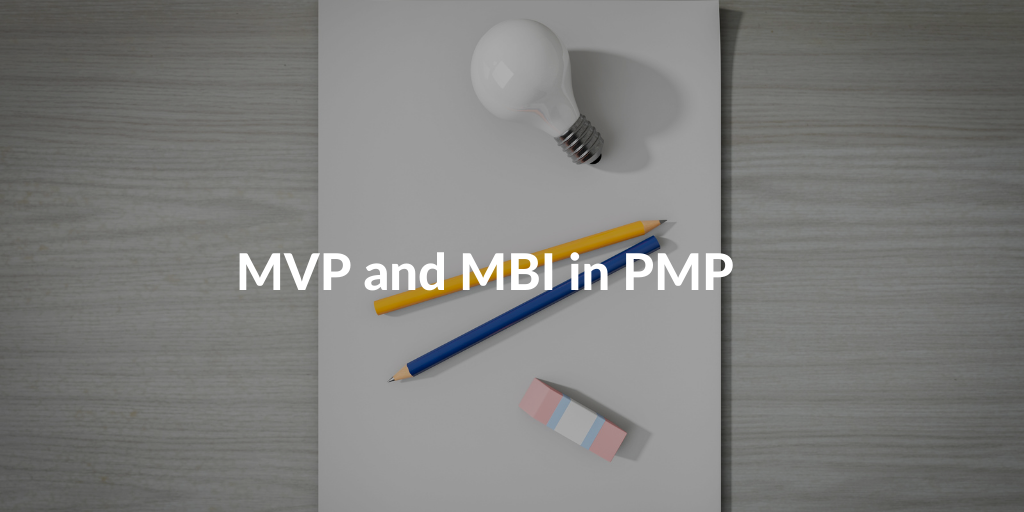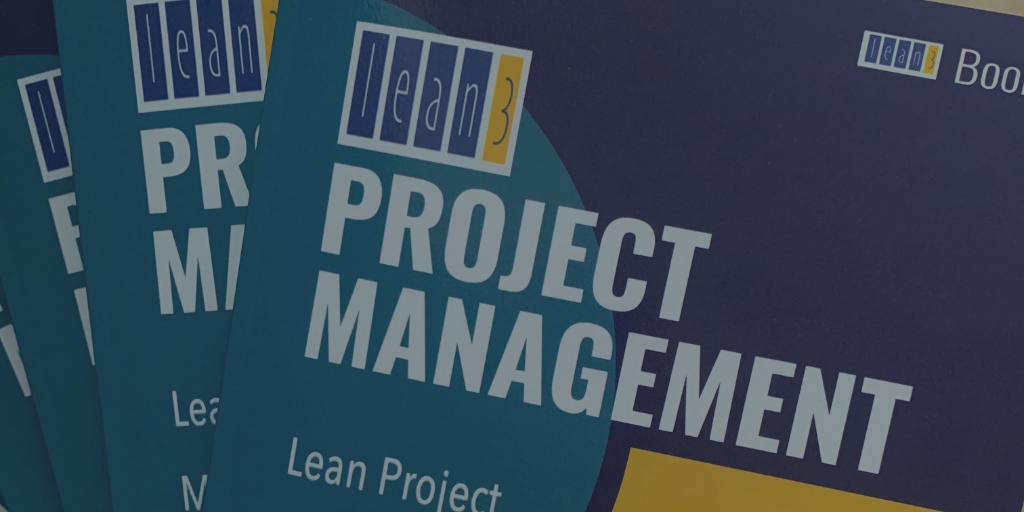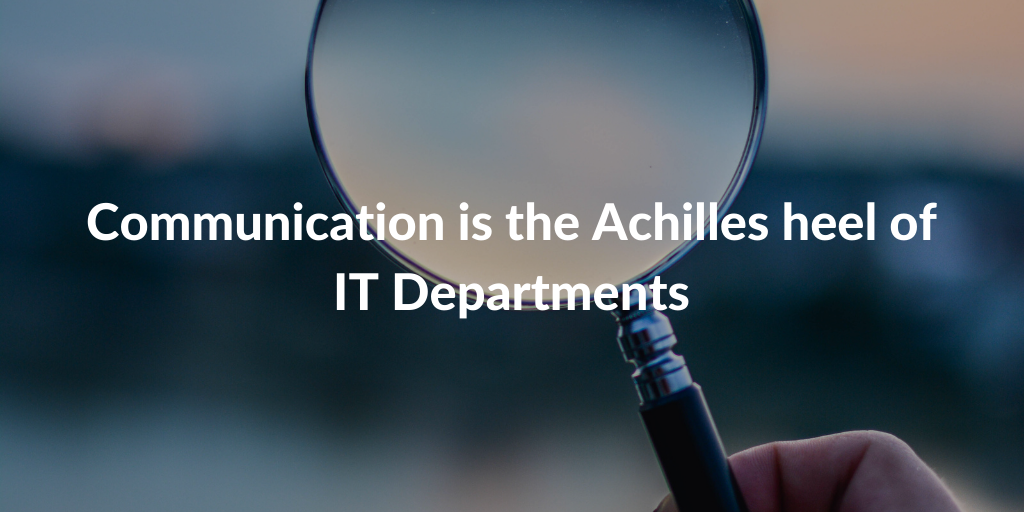News
View the latest inspiring and positive news and information about what's going on in the PM and IT world.

Date: 13/05/2021
PMI’s PMP certification underwent a major change in 2021.
Unlike in previous years, the Exam Content Outline (ECO) balances the certification content between the traditional method of project management and the management of ongoing projects in Agile or Hybrid mode.
In fact, currently, half of the 180 PMP exam questions are about Agility.
Among the new concepts introduced in the official training material of PMI, we can highlight the Product Minimum Viable (Minimum Viable Product – MVP) and the Minimum Business Increment (MBI).
These concepts are widely used and come from the field of ‘Lean Startup’.
Within the new PMP training, they are included in the context of Agile methods.
 Haykel is an accredited PMP, PMI-PBA, PRINCE2 trainer with over 15 years of field experience and PMI Authorized Instructor.
Haykel is an accredited PMP, PMI-PBA, PRINCE2 trainer with over 15 years of field experience and PMI Authorized Instructor.
Read more
Origin and definition of the MVP
MVP stands for Minimal Viable Product. Frank Robinson introduced the concept of MVP in 2001 and sees it as the result of the process of parallel product and customer development. Robinson has found that the team spends a lot of time adding features that do not add value, which creates additional risk. The solution is therefore to find the right size of the product for the company and for the customer. This should be enough to drive customer adoption and customer satisfaction. In 2011, the term was repeated by Eric Ries in his Best-Seller “The Lean Startup” which presents his experiences in the creation of startups. He defines MVP as a new version of the product that allows the team to gather as much knowledge as possible about customer needs and validate them by testing hypotheses. The goal is to minimize the effort and time in product development. Eric Ries cites Dropbox as an example that used this concept and created a 3-minute video to explain how the product works. In a single day, the signatures of the people involved went from 5,000 to 75,000 without having the product. MVP also allows for rapid feedback from clients on their interests and preferences without engaging in a cumbersome and haphazard development process that may ultimately be out of line with their expectations.MVP in project management
A 2013 Standish Group study on IT development projects shows that only 20% of features are frequently used by customers and 50% of features are used very little. For the remaining 30% of the features, they are sometimes used and do not really help improve customer perception. The results are consistent with the Pareto principle which is based on the following law: 80% of the effects are the product of 20% of the causes. Thus, the adaptation of this rule shows that 20% of the functionalities achieve 80% of customer satisfaction. It should also be remembered that the first principle underlying the Agile Manifesto is to satisfy the customer by quickly and regularly delivering high added value features. The above results clearly show the importance of MVP in product design and development based on the concept of “minimal” and “viability”. PMI also finds that creating an MVP inspires the team to achieve the goal of the project. When the results are too abstract or too far apart, teams can become discouraged or overwhelmed. Minimally viable products create short-term urgency and a sense of accomplishment. All of these are valuable for the client, but also for the project team. The idea of an iterative process is to create a version of a raw product and at the same time seek customer feedback. Thus, desired changes and design issues are identified at the right time. Each cycle is an opportunity to improve the product in an iterative and/or incremental way. We can thus understand why this concept is taken up a few decades later, in the management of projects in Agile mode which is based on the prioritization and organization of the functionalities in Backlog and on the segmentation of the product in iterations that deliver the functionalities with strong added value first.Characteristics of an MVP
1. Adequate value perceived by the customer:
The MVP must create sufficient value among customers that encourages them to use it.2. Assurance on future profits
The MVP must also retain the first customers giving assurance and visibility on the development of the expected benefits.3. Continuous improvement
The MVP is an iterative process that is part of a continuous improvement process in the sense that we have access to customer feedback which can be integrated over time into the future development of the product.Successful MVP examples
1. Zappos
Zappos launched in 1999, the success story of Lean Startup. Its founder had the idea of selling shoes on the internet. The idea did not seem very promising in the sense that the shoes should be tried on before they are purchased. Through a basic site, it showed pictures of shoes from nearby stores. With each order placed, he bought the shoes, repackaged them, shipped them, and provided after-sales service himself. Following the increase in sales, he was able to convince investors to finance his startup, which was subsequently bought out for $ 1 billion by Amazon.2. Uber
At the time of its creation, Uber combined drivers available to carry passengers with people wishing to travel. As it developed, the company added other features to meet other customer requirements.3. Airbnb
For Airbnb, two young designers knew that an important convention was being organized in San Francisco and that the rooms would not be available. They then rented the rooms in their apartment with basic services (Air bed and breakfast) hence the name of the company. This is how they invented a new concept of the rental by eliminating intermediation.4. Amazon
Amazon started out exclusively by selling books online through a simple web page before diversifying its offering to its customers. Its concrete examples show the importance of MVP in the incremental creation of value and in the control of the risk of non-compliance until the delivery of the final product.Prioritization techniques
One of the fundamental characteristics of agile approaches is the maintenance of a product backlog that reflects the list of desired capabilities, written in the form of user stories. This list is prioritized by presenting the elements with the highest commercial value first. Among the prioritization techniques mentioned in the context of PMP certification, we can mention:- MoSCoW method: classify the functionalities in the categories Must Have (vital), Should Have (essential), Could Have (Comfort), and Won’t Have (Later). This method identifies an MVP.
- Kano method: identification of the really essential capacities from a classification of the functionalities or capacities in the categories Basic, Performance, or attractive.
- Pairwise comparison: consists of comparing each pair of user stories to determine the priority US.
- 100 points method: each stakeholder distributes a total of 100 points over the different user stories, which allows them to be prioritized.
The Minimum Business Value Increment (MBI)
Some projects improve or revise products that are already in service. As such, an MVP is not necessary to assess interest. Using the concept of minimum business value increment (MBI) is more viable. MBI is the smallest amount (increment) of value that can be added to a product or service that benefits the business.- Minimum: the smallest amount of value that can be achieved. Focusing on a minimum accelerates the realization of value and facilitates the management of work (time, cost …).
- Business: deliver value from a business perspective, aimed at customers and aligned with the business strategy of the company.
- Increment: the realization is done in an incremental way to validate the achievements and avoid waste and the risk of non-conformity of the final product or service.
Haykel Kchaou
 Haykel is an accredited PMP, PMI-PBA, PRINCE2 trainer with over 15 years of field experience and PMI Authorized Instructor.
Haykel is an accredited PMP, PMI-PBA, PRINCE2 trainer with over 15 years of field experience and PMI Authorized Instructor.
Date: 05/05/2021
Jeff has over 25 years of experience in project and program management.
He has carried out end-to-end IT projects in multicultural environments. As Programme Manager and PMO, Jeff organized the P3O installations at NEC Computers and Fortis Bank.
He managed the program offices of the largest transformation programs of NEC Computers and BNP Investment Partners. He is a multilingual trainer for AgilePM, PRINCE2, MSP, P3O, and MoP, able to provide courses in both English and French.
 Jeff has over 25 years of experience in project and program management. He has carried out end-to-end IT projects in multicultural environments. As Programme Manager and PMO, Jeff organized the P3O installations at NEC Computers and Fortis Bank; He managed the program offices of the largest transformation programs of NEC Computers and BNP Investment Partners. He is a multilingual trainer for AgilePM, PRINCE2, MSP, P3O, and MoP, able to provide courses in both English and French.
Jeff has over 25 years of experience in project and program management. He has carried out end-to-end IT projects in multicultural environments. As Programme Manager and PMO, Jeff organized the P3O installations at NEC Computers and Fortis Bank; He managed the program offices of the largest transformation programs of NEC Computers and BNP Investment Partners. He is a multilingual trainer for AgilePM, PRINCE2, MSP, P3O, and MoP, able to provide courses in both English and French.
Read more
What is your current function? What are you working on at present?
These are changing times. Last year, I did a lot of bespoke Project Management training for a major international client of QRP. And last year, I was also an author! I used the lockdown to finish a book that I had been working on for 10 years. This year, I am marketing my book. I am also delivering various QRP courses.How did you build a career in Project Management?
I started off in the UK as a programmer and business analyst. When I moved to France, I became an IT project manager. The projects got bigger and bigger – I ran two big projects in Argentina and the USA. And I innovated: in the mid-’90s, I introduced Agile techniques into a global project. The next career move was to become program manager of the worldwide Y2K initiative for NEC Computers. Then I moved sideways. After Y2K, I set up an IT PMO for NEC Computers and I was program office manager (PMO) for two major business transformation programs.What is the biggest problem or challenge today in Project Management that you have found in your career?
The biggest challenge is to get an entire team of project managers to use a common project management method. There is a huge payback if everyone uses the same method. But it is hard to do – the method has to be simple but effective, and there has to be strong engagement.What advice would you give to the PPM community?
Whatever your role in PPM, build a real Community of Practice to share and develop your good practices. That means practices that really work in your organization. Proven solutions, not textbook solutions.Could you tell us about your book “Lean3 Project Management”?
When I was working at NEC Computers, a senior manager introduced Lean Manufacturing into the company. It was sensational: a huge, positive change. Ever since then, I have been trying to work out how to transfer the best of Lean Manufacturing into Project Management. Many concepts will not translate – the factory is based on repetitive processes whereas each project is a one-off. So I was panning for gold. It was hard to find, but, yes, there were nuggets waiting to be found… I started writing a book ten years ago, and the answers came slowly, year by year. By 2019 I had a working draft – and some clients who were thinking along the same lines as me, to test out ideas. In 2020, during the Covid lockdown, I had time to bring everything together, and publish the book. I am really pleased with the final book. The subtitle of the book is “Lean Project Management for repeated project success”. My vision is the Project Factory, where project management is industrialized and success is repeatable. My book is the starting point for that vision.A final word?
I started working with QRP International in 2006, when it was a 3-man start-up. Today, 15 years later, QRP has grown considerably. I am still a QRP trainer. Over the 15 years, I have given a huge range of training courses in 13 countries and have worked with some really great clients. It has been a truly interesting journey.Jeff Ball
 Jeff has over 25 years of experience in project and program management. He has carried out end-to-end IT projects in multicultural environments. As Programme Manager and PMO, Jeff organized the P3O installations at NEC Computers and Fortis Bank; He managed the program offices of the largest transformation programs of NEC Computers and BNP Investment Partners. He is a multilingual trainer for AgilePM, PRINCE2, MSP, P3O, and MoP, able to provide courses in both English and French.
Jeff has over 25 years of experience in project and program management. He has carried out end-to-end IT projects in multicultural environments. As Programme Manager and PMO, Jeff organized the P3O installations at NEC Computers and Fortis Bank; He managed the program offices of the largest transformation programs of NEC Computers and BNP Investment Partners. He is a multilingual trainer for AgilePM, PRINCE2, MSP, P3O, and MoP, able to provide courses in both English and French.
Date: 28/04/2021
With the adoption of the ITIL 4 framework, the concept of a service life cycle on which ITIL v3 was based has been replaced by a more holistic approach. The processes in ITIL 4 have been replaced by 34 practices.
This change has given organizations more freedom to define tailored Service Transition processes.
The Service Transition Manager is responsible for planning service transactions for operational use and coordinating the necessary resources. He/she must oversee and control all changes to a product’s lifecycle so that changes are made with minimal impact on IT services.
In particular, a Service Transition Manager must approve products, determine that new, modified, or discontinued services meet operational expectations and do not have a negative impact on customers, users, and the company.
The Service Transition Manager must also verify that the service works in both foreseeable and abnormal situations and can be supported in the event of failures and/or errors.
Read more
Main responsibilities of the Service Transition Manager
The Service Transition Manager is responsible for managing all the complexities related to old and new services. He/she also manages the unintended consequences irremediably related to the modification of services and service management processes or the introduction of new services. The tasks also include the management of changes to existing services (such as expansion, reduction, change of supplier, modification of requirements or availability of skills, transfer of services to and from other service providers) and management of deactivations and interruptions of services, applications and/or other service components. Specifically, the main responsibilities include:Speed up decision making
A Service Transition Manager must be able to speed up many processes if there is a need. In order to do so, the service transition manager must be able to plan and manage changes efficiently and effectively. He/she should also see to it that the adoption and management of the change and the effectiveness of the standardization of the transition activities are promoted well.Stakeholder communication
One of the main tasks of a Service Transition Manager is communication with stakeholders. The goal is to ensure that transactions take place smoothly and without incurring blocks or problems. Defining a clear and linear communication plan is certainly a fundamental part of the profession.Track data & provide management information
It is essential to keep track of all the steps of a transaction, whether it is a combined global plan or an individual transition plan, or even release plans. Only when it is clear what the goals of a transformation are, it is possible to understand what data is needed. Gathering all the information from the beginning will make it easier to progress quickly into the more advanced stages of a job.Budgeting and accounting for service and resource transaction activities
In larger organizations, a Service Transition Manager may also be hired for budgeting activities for their areas of expertise.Management and coordination
Among the main responsibilities of a Service Transition Manager, there are certainly all the management and coordination activities on multiple levels. Obviously, it is not about managing all the requests in the IT field but mainly those involved in the activities of Service Transition and the provision of Early Life Support (ELS), resources that can include people, test environments, hardware, and software licenses. Risk management is one of the key tasks of this role. Then there is the coordination of service transition activities between projects, suppliers, and service teams (in collaboration with project managers and other staff, if necessary).Guarantee quality
The Service Transition Manager must ensure that the final delivery of each service transition meets the agreed customer and stakeholder requirements specified in the service design package. It is the duty of the Service Transition Manager to ensure that service changes create the expected business value.Maintenance and monitoring of progress
The Service Transition Manager is held accountable for maintaining and monitoring progress for every aspect of the service transaction: change, configuration, test, release and deployment, and any intermediate steps. It must also monitor progress in actions and work to mitigate possible risks.Organizational knowledge
In-depth knowledge of the organization and its potential value and the identification of all the people involved within the IT organization. How to best use this knowledge and support the employees are certainly extremely important skills for a Service Transition Manager.Why is a Service Transition Manager essential within an organization?
The role of the Service Transition Manager is to accompany the services and products from the construction or modification phase to the operational one. Ensuring that everything takes place with the least possible number of errors and obstacles. The role of conjunction between the organization and the customer is essential to ensure constant quality standards and to ensure customer satisfaction and improve various aspects of the work team.
Date: 21/04/2021
Xavier is Senior Consultant and accredited trainer ITIL 4 Foundation & Intermediate, ITIL v3 Foundation, Practitioner & Intermediate, ITIL MALC, ITIL Expert, DevOps Foundation, ISO20000 Foundation, Lean IT Foundation, Lean, Kaizen, Scrum Master, DevOps Leader, DevOps SRE, DevOps continuous delivery, Integrated Service Management (ISM).
Read more
What is your background, your current position and your mission?
I studied electrical engineering and after my graduation, I followed a job opportunity to work as a computer maintenance technician. This is when I entered the IT branch. I have worked 43 years in the IT sector and am currently a consultant and trainer in Western Europe and Africa.What are the recurring issues that you see in IT services?
Communication in the broad sense of the term is still the Achilles heel of various departments. Professionals do not communicate enough, they communicate badly or not with the right people. Generally speaking, communication takes place in a reactive rather than a proactive form. There is of course a communication problem between IT management and business management, but the communication problem is, unfortunately, a global problem, which exists at all levels.Communication in ITIL
If we analyze the ITIL V3 decision-making level scheme, companies are organized like pyramids. The communication problem I am talking about is a global problem for the company, it is present at each level and between each level. This lack of effective communication leads to many misunderstandings and shortcomings but above all a lack of trust between the stakeholders. This is a big issue because trust, found in the concepts of ITIL and DevOps, is the key to the success of IT-based businesses. In an ITIL environment, communication is more than ever at the centre of the challenges. ITIL 4 offers a framework focused on process automation, optimization of collaboration and communication across the enterprise, as well as the integration and development of service management beyond IT ( such as HR, finance or customer support). Why such an emphasis on collaboration? Simply because collaborating means working together for a common goal. Collaboration is only possible if you communicate effectively. At the strategic level, effective communication between corporate management and IT leadership is critical to ensure that the IT department is and will be well aligned with corporate strategy. IT needs to deliver value to its customers, which is one of the 7 ITIL guiding principles: put value first. This principle is accompanied by a set of components and activities described in the Service Value System (SVS) and implemented by the organisation to enable value creation. This system exists and works only if communication is effective. The practice of relationship management allows the IT department to understand what value means for its interlocutor and its satisfaction criteria with respect to the IT deliverable. The modules of the ITIL 4 Strategic Leader course, namely DITS and DPI, provide a link between the management of the company and the IT management. It is through communication at the governance level that an organisation will be able to align IT governance with corporate governance. Communication allows you to know the business rules to apply in computer programs to be aligned. It is the company that communicates whether the deliverable must be compatible with such or such software, the rules to comply with GxP, the Basel II / III agreements and the national rules to be observed. At the tactical level, communication helps identify customer needs and requirements to establish SLAs. Circumstantial communication is needed at all levels, whether strategic, tactical or operational, with different circumstances and different stakeholders. At the operational level, it will be necessary for the employees of the service centre, who are in contact with the users, to communicate correctly and effectively to know who is the interlocutor, what is the reason for his call and what are his expectations in terms of value. . The ITIL 4 Foundation and ITIL Specialist Create Deliver and Support modules allow the operational level to better understand aspects of communication between stakeholders.Communication in a DevOps environment
In a DevOps environment, we find communication in two (culture and sharing) of the 5 perspectives and values of DevOps, based on the “CALMS” model:- Culture
- Automation
- Lean
- Measurement
- Sharing
Communication in Scrum
In a Scrum environment, there are the different meetings that build internal trust in the development team: . Daily Stand up meeting It optimizes team collaboration and performance. This meeting also facilitates alignment with customer needs. . Sprint planning The creation of a plan collaboratively by all members of the Scrum team. This meeting also facilitates alignment with the PO and customer needs. . Sprint review This meeting is held at the end of the Sprint to inspect the increment achieved and adapt the Product Backlog if necessary. During the Sprint review, the Scrum team and stakeholders discuss what has been done during the Sprint. To conclude, each best practice has its own way of addressing the issue, but communication is omnipresent and at all levels, whether in an ITIL, DevOps or Agile/Scrum context.What are some concepts that you think are relevant to study in the near future to develop as a professional?
Lean, Agile, DevOps and ITIL 4 are the essential foundations. What would be interesting would be to create very in-depth and practical training modules that take the best of the 4 Best Practices, but based on profiles/professions. For example a module for user support, one for transition, one concerning relations between internal customers (SLA) and external customers (contracts) and a last on the management of operations. The professionals who follow a module like that could learn the best of the 4 methods and benefit from the experience of the trainer to deepen the practical side. I think it would be better not to train in ‘silo mode’ but rather to follow a transversal training where professionals can find examples of their daily life, sometimes agile, sometimes a little less. This training would allow, in addition to being motivating for the participants, to really train the staff and to respond to another big issue in IT services, namely the search for talent. → Also read: Communication in virtual projects
Date: 14/04/2021
Marta Binaghi collaborates with various voluntary associations active both nationally and internationally.
She is the proud owner of a PRINCE2 Foundation certification.

Read more
What is your role and what do you do specifically?
I have been collaborating as a volunteer with the Kibarè Onlus association (http://www.kibareonlus.org/) since 2014. That year I participated in a mission in Burkina Faso during which I was able to meet the child I had been supporting remotely for some years. I realized how many basic human rights are taken for granted in Italy, such as health and education, and how it is necessary to commit oneself so that they can truly become universal rights. Our association is small, so volunteers must necessarily be versatile! So far I have mainly dealt with the graphics but I have always helped with fundraising campaigns aimed mainly at making the association known locally.What does Project Management look like in a non-profit organisation? Do you have a particular use case that you would like to tell us about?
As mentioned, so far we have carried out different projects, we set up a nutritional centre and schools, one of which aimed at integrated education among able-bodied and disabled children. All these projects have been made available thanks to the donations of our supporters, private and companies, including QRP. We always wanted to participate in some calls for non-profit organisations for international cooperation projects but, frankly, none of us had the necessary training to present a convincing application for funding. Thanks to the PRINCE2 course given to us by QRP, we now have the skills to draw up a complete and solid project. This knowledge has enabled us not only to convince institutional investors to support the activity of Kibarè Onlus but also to help us to promptly and efficiently monitor the progress made. This gives us the capabilities to promptly manage the requests for change and the unexpected events that we inevitably have to face in a context as unstable and different from ours as that of Africa. I think that in some way Project Management can represent the winning compromise between the monolithic conception that we have of the intervention from Italy and the day-to-day decision-making approach of our local partners in Burkina. We have just started our new project, a kindergarten in a quarry on the outskirts of the capital Ouagadougou, where children can be cared for while the mothers are engaged in mining. I hope to be able to put into practice at least some of the guiding principles that I learned during the course and that I have already shared with the board of directors of Kibarè.What are the biggest challenges for a Project Manager working in your industry?
I think that the greatest difficulty is bridging the distance (not only physical but above all cultural) between our country and the foreign country where we are intervening. Many procedural aspects are often taken for granted and some requests can certainly seem bizarre to local partners. On the other hand, we underestimate the obstacles present in the area (lack of infrastructure, bureaucracy). Finding the necessary documentation can be an odyssey and the resources (especially human) to successfully complete a project are scarcer than people think. It has already happened, as an association, that we started an ambitious project and had to stop. Not for lack of funding, but because we realized, fortunately in time, that the local partner could not properly manage the complexity of the intervention. Returning therefore to the initial question, I could answer that the biggest challenge for a Project Manager active in international cooperation is to establish whether a project is feasible and to monitor that it remains so. → Download now: PRINCE2 2017 Project Initiation Document (PID)What skills do you think are fundamental for a PM in the non-profit sector?
I believe that the Project Manager profile is multidisciplinary by nature; however, there are three skills that in my opinion are essential to be successful in managing a non-profit project: listening, team organization and courage. Listening skills are crucial for anticipating risks and opportunities in the uncertain context in which non-profit organisations often operate. International cooperation connects different worlds such as Africa and Europe. The geographical, but above all, cultural distance requires extreme attention to any signal from the stakeholders that allows preventing, and at least promptly resolve, accidents along the way. Non-profit organisations frequently operate with a hybrid organisation, which combines paid staff and volunteers. While the paid staff usually have a clear role in the organisation, also the team organization of the volunteers is key. It is essential that the project manager values the volunteers by assigning them clear responsibilities, albeit consistent with their availability of time and their interests. I mentioned earlier the painful decision to shelve an ambitious project. In the changing context of the non-profit, the project manager must constantly monitor the expected benefits of the project and its probability of success. The project manager must demonstrate the courage necessary to question the continuation of the project if the development of these indicators requires it.
Marta Binaghi
Marta Binaghi collaborates with various voluntary associations active both nationally and internationally. She is the proud owner of a PRINCE2 Foundation certification.
Date: 07/04/2021
IT services deal with stakeholders throughout the ITSM (IT service management) organisation and in almost every process. Stakeholders are the human component of the service and are all those that have an interest in IT services. Stakeholders include also users and/or customers.
Even though often taken for granted, stakeholders are vital to achieving the organisation’s objectives.
Without stakeholders, an IT service does not exist. They are the ones who carry out the main processes and who provide the resources to ensure business continuity.
Stakeholders are key for ITSM and consequently key in ITIL 4.
Read more
Internal and external stakeholders
Stakeholders can be divided into two main groups, internal and external.Internal stakeholders
- They are those that work within the same organisation (think of the employees of the ITSM organisation, the team, management, partners etc.).
- When speaking about internal IT providers, these can also be internal customers.
External stakeholders
- They are those that are not part of the same organisation. These stakeholders can be external customers and/or users, suppliers and vendors.







